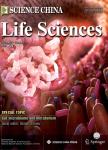Stomatal movement in response to long distance-communicated signals initiated by heat shock in partial roots of Commelina communis L.
Stomatal movement in response to long distance- communicated signals initiated by heat shock in partial roots of Commelina communis L.作者机构:School of Life Science Sichuan University Chengdu 610064 China Beijing Agriculture and Forestry Academy Beijing Agriculture and Biotechnology Center Beijing 10089 China State Key Laboratory of Plant Physiology and Biochemistry College of Agronomy and Biotechnology China Agricultural University Beijing 100094 China
出 版 物:《Science China(Life Sciences)》 (中国科学(生命科学英文版))
年 卷 期:2006年第49卷第1期
页 面:18-25页
学科分类:09[农学] 0903[农学-农业资源与环境]
基 金:supported by the National Basic Research Program of China(Grant No.2003CB114300) National Natural Science Foundation of China(Grant Nos.30270135&30470160)
主 题:root signal, leaf conductance, heat shock, long-distance, signal transmission, abscisic acid.
摘 要:The systematic or long-distance signal transmission plays crucial roles inanimal lives. Compared with animals, however, much less is known about the roles of long-distancesignal communication in plant lives. Using the model plant Commelina communisL, we have probed theroot to shoot communication mediated by heat-shock signals. The results showed that a heat shock of5 min at 40°C in partial roots, i.e. half or even 1/4 root system, could lead to a significantdecrease in stomatal conductance. The regulation capability depends on both heat shock temperatureand the amount of root system, i.e. with higher temperature and more roots stressed, the leafconductance would decrease more significantly. Interestingly, the stomatal regulation by heat shocksignal is in a manner of oscillation: when stomata conductance decreased to the lowest level withinabout 30 min, it would increase rapidly and sometimes even exceed the initial level, and afterseveral cycles the stomata conductance would be finallystabilized at a lower level. Feeding xylemsap collected from heat-shocked plants could lead to a decrease in stomata conductance, suggestingthat the heat shock-initiated signal is basically a positive signal. Further studies showed thatheat shock wasnot able to affect ABA content in xylem sap, and also, not able to lead to a decreasein leaf water status, which suggested that the stomatal regulation was neither mediated by ABA norby a hydraulic signal. Heat shock could lead to an increase in xylemsap H_2O_2 content, andmoreover, the removal of H_2O_2 by catalase could partially recover the stomatal inhibition by xylemsap collected from heat-shocked plants, suggesting that H_2O_2 might be able to act as one of theroot signals to control the stomatal movement. Due to the fact that heat-shock and drought areusually two concomitant stresses, the stomatal regulation by heat-shock signal should be ofsignificance for plant response to stresses. The observation for the stomatal regulation in an



